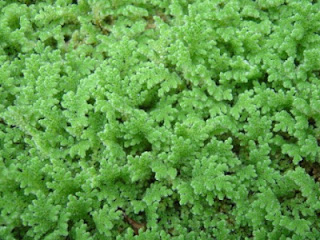1. Rhizobium has symbiotic
association with
a) legumes2. All are free living nitrogen fixers except
b) non-legume crops
c) sugarcane
d) paddy
a) Azospirillum3. Anabaena, a nitrogen fixer is present in the root pockets of
b) Clostridium
c) Azotobacter
d) Bacillus polymyxa
a) Salvinia4. The advantage of plants in mycorrhizal association is
b) Marselia
c) Azolla
d) Pistia
a) food5. Azolla is widely used as nitrogen fixer in
b) protection
c) increased mineral absorption and disease protection
d) all of these
 |
| Azolla |
a) paddy fields6. Which of the following is N2 fixing bacteria associated with roots of C4 plants like maize, sugarcane
b) corn fields
c) maize fields
d) all of the above
a) Azospirillum7. Which of the following is N2 fixing bacterium living in association with sugarcane
b) Clostridium
c) Azotobacter
d) Bacillus polymyxa
a) Acetobacter8. Microbes that solubilize fixed soil phosphorous are called
b) Azotobacter
c) Frankia
d) Azospirillum
a) Phosphorous fixers (PF)9. The major advantage of a plant with VAM is
b) phosphorous solubilising microorganisms (PSM)
c) Phosphorous solubilisers (PS)
d) none of these
a) increased N2 absorption10. Which of the following is a N2 fixing actinomycete
b) increased P absorption
c) increased K absorption
d) increased Mn absorption
a) Acetobacter11. Epizootics are
b) Azotobacter
c) Frankia
d) Azospirillum
a) animals pathogenic to insects12. The endomycorrhizal association is present in
b) microbes pathogenic to insects
c) protists pathogenic to insects
d) viruses pathogenic to insects
a) 10% of plant families13. Which of the following is used as fungal pesticide against Colorado beetle
b) 40% of plant families
c) 85% of plant families
d) less than 5% of plant families
a) Beauveria bassiana14. Bacillus thuringiensis produce
b) Fusarium sp
c) Aspergillus niger
d) Alternaria sp
a) insecticidal protein15. Which of the following fungus is a nematophagous fungi
b) nematocidal protein
c) fungicidal protein
d) all of these
a) Beauveria bassianaAnswers
b) Fusarium sp
c) Arthrobotrys oligospora
d) Alternaria sp
1. a) legumes
2. a) Azospirillum
3. c) Azolla
4. c) increased mineral absorption and disease protection
5. a) paddy fields
6. a) Azospirillum
7. a) Acetobacter
8. b) phosphorous solubilising microorganisms (PSM)
9. b) increased P absorption
10. c) Frankia
11. d) viruses pathogenic to insects
12. c) 85% of plant families
13. a) Beauveria bassiana
14. a) insecticidal protein
15. c) Arthrobotrys oligospora
Tags:
actinomycete
Agricultural Microbiology MCQ
Arthrobotrys oligospora
Bacillus thuringiensis
Beauveria bassiana
Epizootics
Frankia
nematophagous fungi